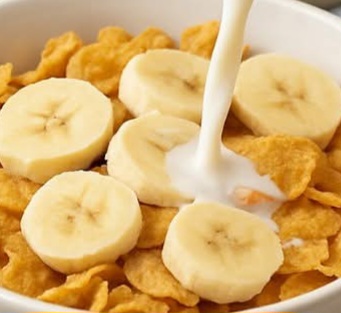Breakfast is often called the most important meal of the day—but not all breakfasts are created equal, especially for older adults. According to health educator Barbara O’Neill, some common breakfast choices may actually work against the muscle strength and energy levels seniors need to stay independent and active.
If you’re over 60, and you’re noticing more fatigue, muscle loss, or weakness, your morning meal might be part of the issue. In this guide, we’ll explore what Barbara O’Neill recommends avoiding—and the better alternatives to help nourish your body, protect your muscles, and keep you feeling strong.Why Muscle Health Matters More as You AgeAfter age 50, most adults naturally lose muscle mass at a rate of about 1–2% per year—a condition known as sarcopenia. This can affect balance, mobility, and the ability to carry out daily activities like climbing stairs or lifting groceries.The good news? You can help slow or even reverse muscle loss with the right nutrition—starting with your first meal of the day.The Breakfast Mistake Many Seniors MakeAccording to Barbara O’Neill, a major mistake is starting the day with high-carb, low-protein meals that spike blood sugar but offer little long-term fuel. These include:White toast with jamBreakfast cereals (even “whole grain” ones with added sugars)Instant oatmeal with sugar packetsMuffins, croissants, or pastriesFruit juice without fiber or proteinThese foods digest quickly, causing a rise in blood sugar followed by a crash—leaving you feeling tired, foggy, and hungrier later. Worse, they don’t provide the protein or nutrients your muscles need to rebuild and stay strong.Barbara O’Neill’s Better Breakfast BlueprintBarbara encourages starting your morning with whole, nourishing foods that include:Complete protein to maintain muscleHealthy fats to support energy and brain functionComplex carbs to stabilize blood sugarNatural fiber to support digestion and fullnessHere are her top breakfast recommendations for older adults:1. Eggs with VegetablesEggs are a high-quality source of protein and essential nutrients like B12 and choline. Pair them with sautéed spinach, mushrooms, or bell peppers for extra vitamins and fiber.Try: Scrambled eggs with olive oil, herbs, and steamed greens.2. Steel-Cut Oats with Nuts and SeedsUnlike instant oatmeal, steel-cut oats release energy slowly. Top with almonds, walnuts, chia, or flaxseeds for healthy fats and fiber.Add a spoonful of plain Greek yogurt or a boiled egg on the side for extra protein.3. Plain Greek Yogurt with Berries and Ground FlaxGreek yogurt is rich in protein and probiotics. Mix in antioxidant-rich blueberries or raspberries and a sprinkle of flaxseed to support digestion and reduce inflammation.Avoid flavored yogurts with added sugars.4. Protein SmoothiesA smoothie can be a great option if chewing is difficult or if you’re on the go.Try blending:½ bananaHandful of spinachScoop of unsweetened protein powder (or hemp seeds)1 cup unsweetened almond milk1 tbsp almond butter5. Avocado on Whole Grain or Sprouted BreadAvocados offer fiber and healthy fats. Spread on sprouted bread and top with a poached egg or sprinkle of hemp seeds.Avoid white bread or sweet spreads like jam.Foods to Reduce or Avoid at BreakfastBarbara O’Neill emphasizes limiting or avoiding these foods, especially for older adults managing blood sugar or muscle loss:Refined grains (white bread, bagels, pastries)Sugary cerealsFlavored yogurts with added sugarFruit juice (instead, eat whole fruit)Processed breakfast meats (like bacon or sausage, which may contain preservatives and excess salt)Why Protein Is Critical in the MorningMuscle repair and growth rely on amino acids, which come from protein. Seniors are often at risk of under-consuming protein, especially at breakfast. Barbara suggests 20–30 grams of protein per meal for seniors looking to maintain or rebuild muscle.Good morning sources include:Eggs (6–7g per egg)Greek yogurt (15–20g per cup)Cottage cheeseNut buttersProtein-rich smoothiesCooked legumes or tofu (for plant-based diets)Sample Muscle-Friendly Breakfast RoutineHere’s an example of what your breakfast might look like if you follow Barbara O’Neill’s approach:2 scrambled eggs with spinach and mushrooms1 slice sprouted grain toast with avocado1 small bowl of berries1 herbal tea or glass of water with lemonThis meal offers balanced macronutrients, fiber, and plenty of nourishment without spiking blood sugar.What About Coffee?Coffee in moderation is fine for most people, but Barbara suggests avoiding adding sugary creamers or sweeteners. Pair your morning coffee with a protein-rich breakfast, not a sugary pastry.Final ThoughtsBarbara O’Neill reminds us that how you start your day matters. Swapping a sugary, processed breakfast for one filled with protein, healthy fats, and fiber can help protect your muscles, stabilize energy, and support healthy aging.If you’re feeling tired in the mornings or noticing muscle loss, your breakfast could be part of the picture. The best part? These changes are simple, affordable, and don’t require a major overhaul—just a shift in what’s on your plate.Want more tips for aging well? Share this with a friend or browse our wellness guides for seniors.Disclaimer: This article is for informational purposes only and does not replace professional medical advice. Always talk to your healthcare provider before making changes to your diet, especially if you have health conditions or take medication.Barbara O’Neill Warns: This Common Breakfast May Not Support Muscle Health in Seniors — Here’s What to Eat Instead
